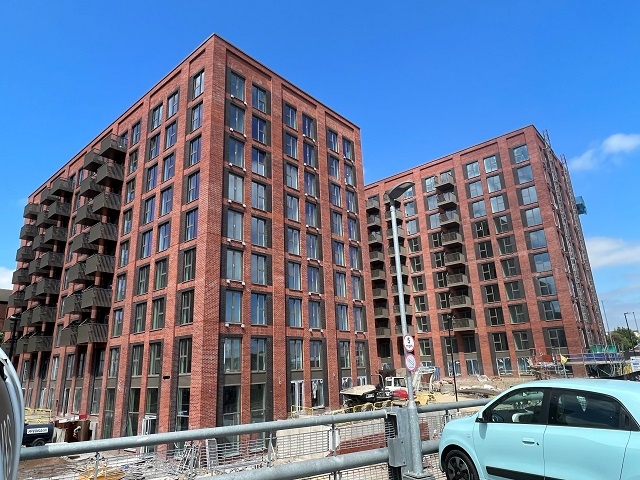Population growth is a fundamental factor shaping the dynamics of the property market. As the global population continues to expand, its impact on real estate markets—ranging from residential and commercial properties to land values—is both profound and multifaceted. This blog post explores how population growth influences property markets, considering various aspects including demand, prices, infrastructure, and urbanization.
Understanding Population Growth
Population growth refers to the increase in the number of people living in a particular area over time. This growth can be influenced by factors such as birth rates, death rates, and migration patterns. As people move from rural to urban areas or from one country to another, they contribute to changes in local and national demographics. This shift can have significant implications for the property market.
1. Increased Demand for Housing
One of the most direct effects of population growth on the property market is the increase in demand for housing. As more people move into an area, there is a corresponding rise in the need for residential properties. This can lead to a higher demand for both rental properties and homes for purchase. In cities experiencing rapid population growth, such as major metropolitan areas, this demand can outstrip supply, resulting in a competitive housing market.
For example, cities like San Francisco and New York have faced significant housing shortages due to their high population growth rates. This can lead to increased property prices, making it more difficult for residents to find affordable housing. Conversely, in areas where population growth is slower, there may be a surplus of housing, leading to lower property prices and potentially reduced investment returns.
2. Rising Property Prices
As demand for housing increases, so do property prices. This is particularly evident in high-growth urban areas where new residents drive up the competition for available homes. The basic principle of supply and demand dictates that as more people seek to buy or rent properties, prices will rise if the supply does not keep pace.
In addition to residential properties, commercial real estate can also see price increases. Businesses seeking to establish themselves in high-growth areas may drive up demand for office spaces, retail locations, and industrial properties. This can result in higher rental rates and property values, which can have cascading effects on local economies.
3. Pressure on Infrastructure
Population growth places significant pressure on infrastructure. As more people move into an area, the existing infrastructure—such as roads, public transportation systems, schools, and healthcare facilities—can become strained. This can lead to congestion, reduced quality of services, and increased demand for new infrastructure projects.
In response to these pressures, governments and developers may need to invest in expanding and upgrading infrastructure. This can include building new roads, expanding public transit systems, and improving utilities. While these investments can enhance the appeal of a location, they can also contribute to higher property prices due to the increased desirability of well-developed areas.
4. Urbanization and Land Use Changes
Population growth often leads to increased urbanization, as more people move from rural areas to cities. This shift can result in changes in land use, with previously undeveloped areas being converted into residential, commercial, or mixed-use developments. Urbanization can drive demand for property in newly developed areas, as well as increase the value of land that is already developed.
In many cases, this urban expansion can lead to the gentrification of previously lower-income neighborhoods. As more affluent individuals move into these areas, property values can rise, leading to the displacement of long-time residents and changes in the socio-economic landscape.
5. Investment Opportunities
For investors, population growth presents both opportunities and challenges. High-growth areas can offer lucrative investment opportunities, with potential for significant returns as property values increase. Real estate investors often seek to capitalize on trends in population growth by investing in emerging markets and development projects.
However, investing in areas experiencing rapid growth also comes with risks. Rapid changes in population and infrastructure can create market volatility, and there may be uncertainties related to future growth patterns. Investors must carefully analyze demographic trends, local economic conditions, and development plans to make informed decisions.
6. Regional Variations
The impact of population growth on the property market can vary significantly from one region to another. In developed countries with stable populations, growth may be slower and more predictable, leading to gradual changes in property markets. In contrast, developing countries with high growth rates may experience more dramatic shifts in housing demand and property prices.
For instance, countries in Sub-Saharan Africa and parts of Asia are experiencing some of the fastest population growth rates globally. In these regions, rapid urbanization is driving significant demand for new housing and infrastructure. Conversely, in many Western countries facing slower or negative population growth, property markets may be more stable, with less dramatic fluctuations in prices and demand.

7. Long-Term Trends and Sustainability
Looking to the future, the impact of population growth on the property market will continue to evolve. Long-term trends, such as shifts in demographics, technological advancements, and environmental considerations, will play a crucial role in shaping the market. To view more of Emerald Of Katong Price, visit their page for further info.
Sustainability is becoming an increasingly important factor in real estate development. As concerns about climate change and environmental impact grow, developers and investors are placing greater emphasis on sustainable building practices and energy-efficient properties. This focus on sustainability can influence property values and demand, as eco-friendly and resilient properties become more desirable.
Conclusion
Population growth is a key driver of change in the property market, influencing everything from housing demand and property prices to infrastructure development and investment opportunities. As the global population continues to expand, understanding these dynamics is essential for homeowners, investors, and policymakers alike. By staying informed about trends in population growth and their implications for the property market, stakeholders can make better decisions and navigate the complexities of the evolving real estate landscape.
In summary, while population growth presents challenges, it also offers opportunities for those who can anticipate and adapt to changing market conditions. The ability to effectively respond to these changes will be crucial in shaping the future of the property market and ensuring its sustainability in an increasingly crowded world.










